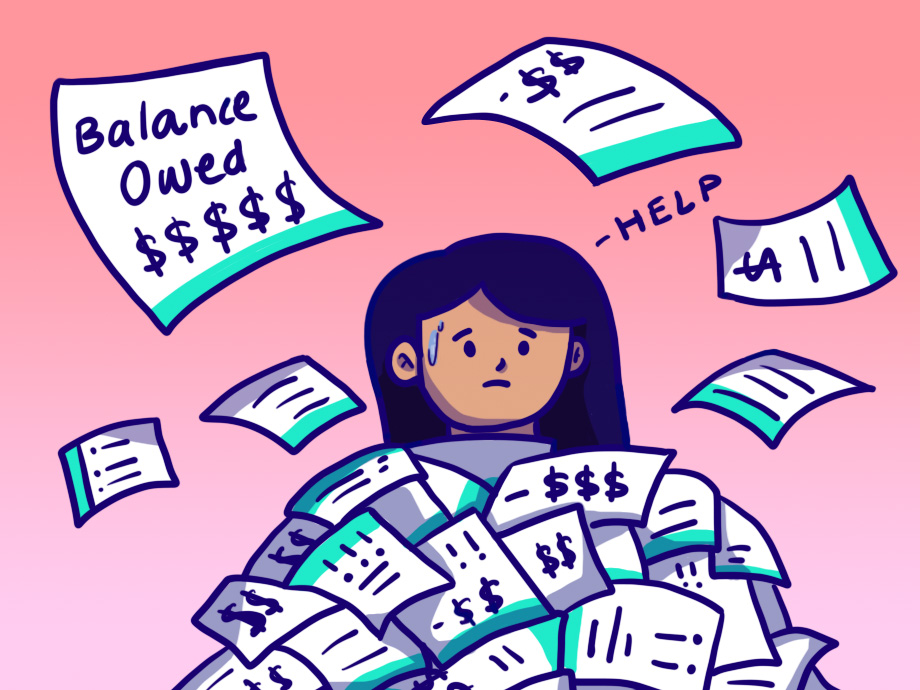Financial Planning | Investing | Personal Finance | Article
How to Spot a Financial Scam and Protect Yourself from Being a Victim
by Ooi May Sim | 31 Mar 2022 | 9 mins read

Your introduction to a financial ‘scam’ was probably in school when your friend borrowed money and never paid you back. (You still owe me RM1 for your nasi lemak, Jo!) But as we grow older, the ways people extort our money become more elaborate, and scams involve larger sums of cash.
Last year alone, 15,935 cases of online fraud were reported in the first nine months of the year. This amounted to a total of RM380 million in loses. Commercial Crime Investigation Department deputy director Muhammed Hasbullah Ali shared that online cheating cases have increased by 60.6% over the last 10 years.
And these are just the numbers for online scams.
These days, it seems like everything can be turned into a scam. You can get scammed when you are looking for a job, companionship, ways to grow your money and even when you buy a new pair of kicks. In September last year, there was even a report of a fake animal shelter that had sourced for donations from kind-hearted Malaysians.
The only weapons we have against these fraudsters are awareness and education. So, we’ve compiled a list of the five most common scams in Malaysia and ways you can spot them.
1. Impersonation scams
What it is:
- Scammers pretend to be trusted organisations such as a bank, government department, police or service provider.
How it works:
- This scam is usually conducted over the phone where a scammer may have your full name and other personal details before telling you that your account has been compromised or linked to criminal activity. They will then walk you through ways on how you can rectify the problem such as by transferring your money into a ‘safe’ account.
- They may also claim that you have inaccurately declared your taxes and ask you to make a fund transfer to avoid being blacklisted or getting your account frozen.
- There are countless variations to this tactic, but the underlying strategy is to scare victims into thinking they are in trouble and get them to make transactions while they are still in a state of panic and shock.
How to protect yourself:
- Never: click on suspicious links, download apps that are not from secured sources (such as Google Play Store) and make any transactions over the phone.
- Install apps that can filter and block spam calls.
- Hang up immediately. If you are worried, you can call the organisation’s official phone line to check their claim.
2. E-commerce and delivery scams
What it is:
- On shopping platforms, fake sellers draw in unsuspecting victims by using fake websites and advertising.
How it works:
- Scammers list fake items at considerably lower prices to entice victims to make a purchase. Once a transaction is done, these scammers will go missing or block victims from contacting them. If transactions are done online, scammers can even steal your credit card and account details.
- This can also be part of a parcel scam where sellers charge you for fake deliveries.
How to protect yourself:
- A key problem with online shopping scams is that it is difficult to differentiate between genuine offers and fake ones. Safeguard yourself by always buying from trusted sites.
- Always check a website’s authenticity before making any monetary transaction. The website should have a “https” in the address and a closed padlock symbol.
- Use different passwords for different accounts. Even if one account is compromised, it won’t affect your other accounts.
- Don’t sign up and store your details in a website. Instead, check out as a guest.
Related
3. Phishing scams
What it is:
- This is a type of cyberattack where a person may receive an email or SMS that appears to be from a well-known and trusted source, such as a colleague or a bank. The message often claims that there is a problem that needs to be rectified immediately or that the recipient has won a price. It also includes a malicious link.
How it works:
- Once someone clicks on the link, they will be led to ransomware, malware, or directed to a fake website that resembles the real one. Unsuspecting victims might enter their log-in information and password, or download apps from the link, which would be used to wipe out their savings.
- These systems can also steal personal data and even disrupt computer systems.
How to protect yourself:
- Generally, the rule of thumb is to never share personal information online (that includes social media). Sharing your address, phone number, birthday and other personal details puts you at a greater risk of identity theft and being targeted for scams.
- Don’t click on suspicious links, attachments or pop-ups that are sent via an email or SMS. Always go to official websites to check banking and personal details.
- Use firewalls, antivirus, and anti-spyware software to block hackers and phishers from infiltrating your computer or network.
- You might also want to install an anti-phishing app on your phone or an anti-phishing toolbar on your web browser, which will alert you if they detect a
4. Love scams
What it is:
- Love scams are perhaps the most heart-breaking as the they not only steal money; they mess with a victim’s emotions and mental health as well. Fraudsters pose as ‘dream’ life partners, often showering vulnerable victims with attention and affection.
How it works:
- After befriending the victim and gaining their trust, the scammers would then come up with a ruse that they have fallen on hard times and ask for some financial help.
- They may also introduce smitten victims to fake investment schemes or business ventures.
- Another ruse is when scammers ask for nude photos or ask victims to perform sexual acts in front of a webcam. These pictures and footages are used to blackmail victims — scammers threaten to send the illicit content to victim’s family and friends if they aren’t given money.
- Love scams can also be a form of parcel scam where ‘lovers’ send jewellery and gifts to their victims, but the victim would need to pay for ‘courier charges’ when the gift ‘suddenly’ gets stuck in transit.
How to protect yourself:
- Be wary of people you meet online, especially if you have never met them in person. Do a background check: Google their name – if they do not have an online presence in this day and age, it is definitely cause for concern. You can also do a quick reverse image search to see if their profile picture is being used by someone with another name.
- Use trusted dating sites.
- Don’t share personal details, and do not send or receive any money or gifts from them, as it would require you to give them your name, contact number and home address.
- Invite them for a video chat but be aware of your background. If they keep making excuses for not wanting to talk to you live and show their face, this is a red flag. But be mindful of your background (don’t leave any personal details in view of the camera frame).
5. Investment scams
What it is:
- Skim cepat kaya (get rich quick schemes) have been around forever. Scammers bank on people’s desire to make a quick buck by offering them investment opportunities that sound too good to be turned down.
How it works:
- Investment scams always involve big payouts, quick money or guaranteed returns.
How to protect yourself:
- Be wary of investments that promise unrealistically high returns (ie: above 10% a year) in a short period of time, and guaranteed returns. If something sounds too good to be true, it probably is.
- Only deal with licenced financial institutions and authorised dealers. You can also check with relevant authorities before making an investment.
- Be suspicious of high-pressure sales. A salesperson who is pressuring you to invest “immediately” is a red flag.
Related
Check their scam status
Semak Mule is a tool the public can use to identify bank accounts, telephone numbers and Identification Card (IC) numbers that have been used by scammers in a fraud case.
You can access this via an app (by installing it on your phone via Google Play), or at https://semakmule.rmp.gov.my/. (Sorry, Apple users. Semak Mule is currently not available on the Apple store).
Please be mindful that although an account, telephone number or IC number is not listed on the site, that does not mean it is scam-free. It could just mean that it hasn’t been identified, yet!
What should you do if you’ve gotten scammed?
Firstly, we are so sorry that this happened to you, and while we are gunning for you to get your money back, the chances of this happening, unfortunately, is slim to none.
Scammers these days are really adept at transferring money around, making it extremely difficult for it to be traced.
However, you should still make a police report as your case might help investigations and keep others safe from getting scammed. Government agencies use reports of scam to investigate and track patterns and tactics used by scammers. They can even use the information you gave them to trace bank transactions.
After you file a police report, you would also need to make a second report at Bank Negara Malaysia (BNM). As it is considered a criminal case, BNM advises victims to keep all records and documentations, such as transaction details and descriptions of the people you engaged with to help with investigations.
Always stay vigilant
The best way to protect yourself and your money is to stay vigilant. Being distrusting of people, phone calls, emails and SMSes all the time is not a pleasant way to live, but that is unfortunately the reality of the dystopian world we are currently living in where scams are rife, and where people exploit the vulnerable. So, it’s better to be safe than sorry.



















